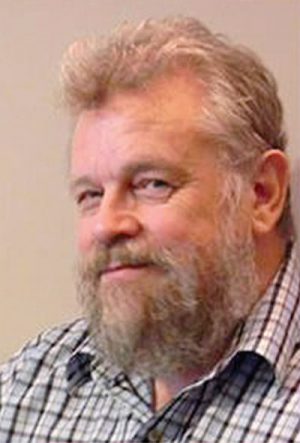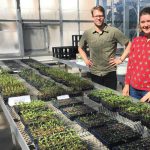BioCycle July 2019
“Zero Waste” In 1970
A news item in the March/April 1970 issue of Compost Science (the original name of BioCycle) was titled, “Whole Earth Salvaging Co.” It is one of the earliest references we found while looking through the last 60 years of BioCycle editions. The item is reprinted below:
The following idea on Zero Garbage Production was suggested by Ecology Action, 162 University Ave., Palo Alto, CA 94301:
1. Get a group of households together in your neighborhood who want to help make the WHOLE EARTH SALVAGING CO. work.
2. Organize a neighborhood pick-up point (a garage, nearby vacant lot, etc.) (1 pick-up point for each group of 7 or 8 households).
3. Arrange to pick up or have the “recyclable resources” taken to the pick-up point. (Each person should separate out glass, aluminum cans, tin cans, and newspapers.)
4. On specified dates (We start out Saturday, March 28th), take the segregated items to central storage points (Storage points now being located). If you know of any — an unused shed, garage or lot — let us know at Ecology Action.
Remembering David Border
David Border, who died in June 2019 at his home in Cambridgeshire, England, was a very well known figure in the industry for organic waste recycling in the United Kingdom and internationally, particularly in the United States. With his signature bushy red-brown beard, small stature and, by his own admission, rotund and somewhat overweight profile, his unique shadow lies across so much of the organics industry we know today. David graduated from The University of London in 1967 and went on to lecture in biochemistry at Imperial College during the 1970s, researching biochemistry of fungi and their microbial interactions. He then went to work in the mushroom industry, which at the time, was the only commercial sector involved in large-scale composting. In 1987, David joined Hensby’s, a large-scale mushroom composting site, where he continued research into process optimization and compost biology.
Technology advanced quickly and David was a pioneer of what would become industry standard in-vessel composting. The mushroom industry transformed rapidly from one using horse manure and open windrow composting systems to more controlled processes using, largely, chicken manure and more defined inputs. Never content to stop developing ideas, David was the first person in the UK to think about what else could be composted using in-vessel systems. Much to the amusement of those in the mushroom industry, he set about trying a range of materials, from wastewater sludges to shredded green waste. David not only put what seemed at the time as enormous quantities of “stuff” into aerated boxes, he also brought a critical microbiologist’s view to what could be, or should not be, done — with a sharp eye for the “snake-oil salesmen” offering magic fixes, from mineral additives and enzyme supplements to microbial “seeding.”
David was a very professional and trusted consultant through his company David Border Consultancy, advising some of the top UK project developers not only in composting, but also in next generation technologies such as anaerobic digestion. However, first and foremost he was a communicator and an idea man. He thrived on this, meeting new friends, colleagues and associates, filing ideas away in his memory until they became useful. A meeting that David relished was with His Royal Highness (HRH) Prince Charles, showing him the muddy way around the Hensby’s composting site to see the innovative sludge composting work — surely a rare down-to-earth trip for HRH and it’s nice to think that perhaps this was a key step to his own love of organic farming and the environment.
David always published his ideas and new developments, particularly in industry journals both in Europe and the U.S. He became a very well known participant in international organics’ conferences, particularly BioCycle events held across the U.S. and was a member of, and contributor to, various industry advisory bodies. In recent years, David continued to look beyond the current state-of-the-art and not content with having been a key figure in developing commercial-scale controlled composting turned his attention to using our natural resources as biorefineries, particularly microalgae as the next generation technology. He continued to look at how to make an economic case for such developments, proposing integrated processing, waste management and carbon accounting strategies.
David was never known to wear a tie, and in fact in more than 40 years seemed never to change his appearance or outwardly good mood. Sadly, despite this apparent level headed consistency, David was not in good health nor a happy or contented individual and, after a previous attempt, took his own life, alone. Those that worked with David know that his legacy lies in the quality, predictability health and safety of our composts and digestates and in the next generation of organics research. Yet at a personal level his passing risks going largely unrecorded. To mark his passing, donations to the mental health charity Mind can be made.
Tribute writtten by David Border’s long-time friend and colleague, Robin Szmidt, Target Renewables.
Date Labeling Standardization
“The time is ripe for date label standardization,” states a new issue brief from the Harvard Law School Food Law and Policy Clinic (HFLPC). “Federal legislation to standardize date labels could alleviate consumer confusion and reduce food waste in American homes and consumer-facing businesses, and can be implemented at very little cost to government and industry. Federally-standardized date labels have the potential to divert an estimated 398,000 tons of food waste and provide the U.S. a total economic value of $1.8 billion.” At a minimum, notes HFLPC, “federal legislation should include the following: 1) Standardized date labeling phrases for quality and safety; 2) Eliminate prohibitions on sale past the quality date; and 3) Provide for nationwide consumer education.”
The brief discusses challenges posed by conflicting state date labeling laws, and the critical importance of providing consistent education to consumers nationally: “The promise of standardized date labels will only be achieved if the labels are standard on all products, and if the federal agencies regulating foods are able to stand behind those labels and educate consumers about their meanings.”
GAO Assesses Progress Toward 50% Food Waste Reduction Goal
In 2015, the U.S. Environmental Protection Agency and the U.S. Department of Agriculture announced a national goal to reduce food loss and waste (FLW) in the United States by half by 2030. In 2018, Food and Drug Administration (FDA) joined EPA and USDA in meeting the goal. The Government Accounting Office (GAO) was asked to examine efforts by these federal agencies to reduce FLW. Its findings, released in June, identified three key areas in which challenges exist to reducing FLW in the U.S.: 1) Limited data and information about FLW; 2) Lack of awareness and education about FLW; and 3) limited infrastructure and capacity. GAO identified these challenges through interviews with selected stakeholders.
The three agencies have taken some actions to plan and organize their initiatives toward achieving the national FLW reduction goal. In April 2019, the agencies announced an interagency strategic plan with prioritized action areas to reduce FLW, but this strategic plan does not address how it will incorporate key practices for interagency collaboration that GAO identified, including:
1) Agreeing on roles and responsibilities
2) Developing mechanisms to monitor, evaluate, and report on results
3) Clearly defining short- and long-term outcomes
4) Identifying how leadership commitment will be sustained
5) Ensuring that the relevant stakeholders have been included in the collaborative effort.
By incorporating such practices as they implement their interagency strategic plan, EPA, USDA, and FDA would have better assurance that they were effectively collaborating toward achieving the national FLW reduction goal.
Practical Guide For Reducing Food Waste
The Commission for Environmental Cooperation (CEC) released a guide and technical report to measure food loss and waste across the food supply chain in Canada, Mexico and the United States.
“Why and How to Measure Food Loss and Waste: A Practical Guide” is designed for food producers, retailers, restaurant operators, and food service providers to measure the quantity of food wasted in their process activities, and reduce operational costs while also helping to reduce the environmental impacts of North America’s food production system.
The technical report, “Quantifying Food Loss and Waste and Its Impacts,” provides methods to quantify food loss and waste and food surplus across the supply chain, as well as tools to estimate the environmental, financial, and social impacts of food loss and waste.
Methane Emissions From Ammonia Fertilizer Plants
A new study from researchers at Cornell University and the Environmental Defense Fund has independently measured methane emissions from a number of ammonia fertilizer plants. The results suggest methane emissions are 100 times higher than industry estimates, and three times higher than the Environmental Protection Agency’s estimate for all industry methane emissions in the United States.
The following is excerpted from an article posted on NewAtlas.com: The new study “set out to add some much needed objective measurements to an understudied sector of methane emissions: industrial users of natural gas. The majority of prior research has examined methane emissions at earlier points in the natural gas supply chain, including measurements at points of production and distribution. To explore methane emissions from industrial users of natural gas, new methane-sensing equipment recently installed into some Google Street View cars was used. Fertilizer factories were identified as targets as they are a major user of natural gas; six representative factories were selected, out of around two dozen in the U.S. The sensor vehicles traveled on public roads near the factories to quantify downwind methane emissions escaping due to leaks, incomplete combustion, or inefficient chemical reactions during fertilizer production.
“The results were incredible, with an average of 0.34 percent of all natural gas used in the factories found escaping into the atmosphere. The study then scaled this number up to all fertilizer manufacturing in the U.S., calculating annual methane emissions to be 28 gigagrams. The industry reportedly only estimates its methane emissions to be 0.2 gigagrams per year. The EPA currently claims all industrial processes and product use in the United States produce a total of 8 gigagrams of methane emissions.” The research was published in the journal Elementa.
4.4 Million People In U.S. Exposed To Pollution From Waste Incinerators
The Tishman Environment and Design Center at The New School in New York City uncovered for the first time that approximately 8 out of 10 waste incinerators in the U.S. are located in environmental justice communities (lower income communities and/or communities of color). Approximately 4.4 million people in the United States live within a 3-mile radius of an incinerator. These facilities have been known to emit mercury, lead, particulate matter 2.5 and 10, sulfur dioxide, nitrous oxide, and carbon monoxide, all of which pose significant dangers to public health. According to the Tishman research, incinerators in the U.S. emit more of these pollutants, as well as carbon dioxide, per kilowatt hour of energy than fossil fuel power plants.
A comprehensive study of the industry in the U.S. from its rise in the 1980s to today, the New School report concludes that incinerators are a bad investment for cities. “These aging facilities are too expensive to maintain, too risky to finance, and too costly to upgrade,” says Ana Baptista, Associate Director, of the Tishman Environment and Design Center at the New School. “Incinerators in the U.S. are operating under increasingly volatile economic and regulatory conditions that threaten their major sources of revenue, tipping fees and energy sales.”











